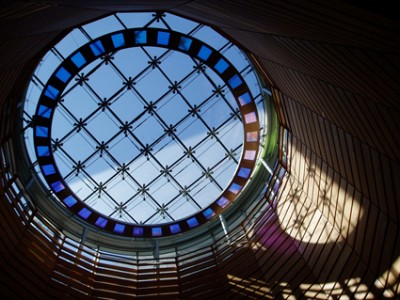All lectures take place at 2:30 p.m., 412 St. Patrick’s Building.
September 11, 2009
“Poor Paolo, Poor Painting” by Stephen Gritt
In 1788, Paolo Veronese’s largest Altarpiece was cut into pieces by a dealer who thought the painting was too big and complicated to sell. The surviving fragments have been apart since, but are now together at the National Gallery of Canada despite exorcism, altered identities, disaster at sea, and major restorations. The talk tells this story, and puts this rediscovered masterpiece in focus.
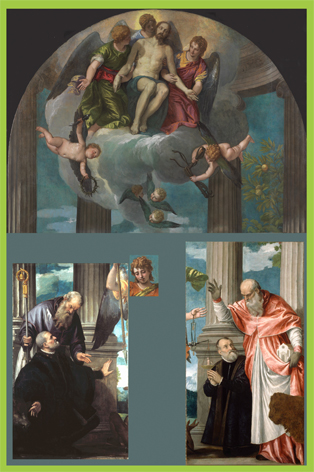
Friday, October 23
“Artist’s Talk” by Michèle Provost
Michèle Provost is a conceptual artist whose unusual choice of media and technique captures the tensions of living in a post-modern age. Her choice of subject, whether a graphic image of urban culture, a quotation from the textual discourse of art history, or a fleeting and mundane moment from her own life, is deliberately rendered using a slow and traditional hand-stitching process. The resulting works are emotionally charged, sensually designed and purposefully open-ended.

Friday, January 15
“In Search of the Picturesque: Popular Taste in Landscape Imagery in Canada and the United States during the Nineteenth Century” by Brian Foss, Director, School for Studies in Art and Culture
By the middle of the 19th century landscape was reaching a huge audience, partly through paintings in exhibitions but especially through illustrations that were published in magazines aimed at rapidly growing mass audiences. Much of that imagery relied heavily upon the ideal of “picturesque” landscapes that captured the wildness of North American geography, but that succeeded in bringing that wildness under control by means of pictorial conventions. This paper looks at how the search for the Picturesque came to characterize much nineteenth-century North American landscape art, and how it subsequently evolved to fit the highly urbanized and industrialized societies of Canada and the USA during the last three decades of the century.
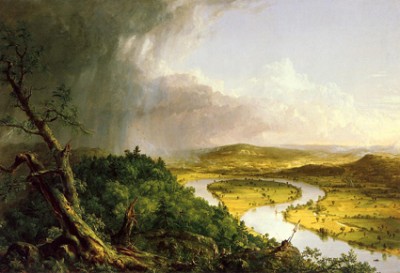
Friday, February 12
“Picturesque Edinburgh: Historical Distance in Nineteenth-Century Photography” by Robert Evans, Institute for Comparative Studies in Literature, Art and Culture
In the 1860s and 1870s, commercial photography in Edinburgh, Scotland, reinscribed an existing set of iconographic views of the city that predated the experiences of urban modernity in the mid-nineteenth century. This paper, based on research done as the Lisette Model Fellow in the History of Photography at the National Gallery of Canada, explores the intersection of commercial photography, nostalgia, and popular graphic arts in mid-nineteenth-century Edinburgh.
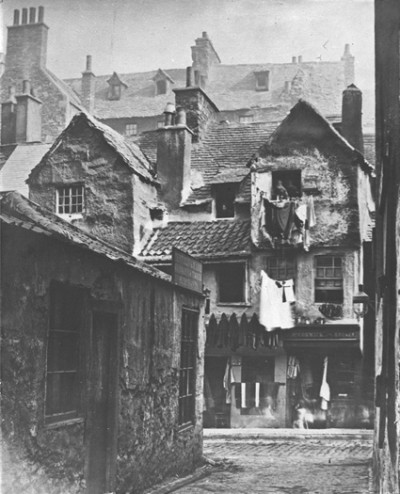
Friday, February 26
“The Paradox of Time: Nouveau Réalisme’s curious ‘Archeology of the Present’ by Jill Carrick, School for Studies in Art and Culture
My paper examines a series of haunting Accumulation works produced by the French Nouveau Réaliste artist Arman during the early 1960s, and compares one of these, titled Paradoxe du Temps, with a work by fellow Nouveau Réaliste artist Daniel Spoerri called the Anecdoted Topography of Chance. Each artist, I suggest, responds to dramatic changes brought about by 1960s modernity by representing quirky samples of the material culture of the period. Both, I argue, attempt to simulate a type of ‘archeology of the present’ (to use a term from the period), but they do so in ways that exemplify radically different relations to memory and time.
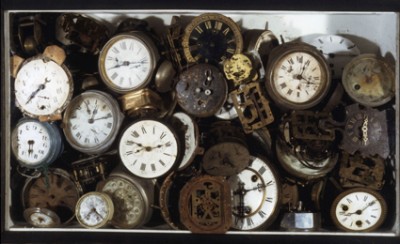
Arman, Le Paradoxe du Temps / The Paradox of Time, 1961. Armand P. Arman Revocable Trust, New York, NY.
Friday, March 12
“Satire and Public Art” by Adrian Göllner
It’s a wonder I receive commissions at all. Site-specific artworks loaded with bad puns, Cold War references and jibes at our consumer society is not the kind of work that usually endears one to a corporate client. Thankfully, most prospective clients have been able to see past the satirical content of my studio practice to see a fair ability to address the scale, meaning and history of a site with appropriate mediums and techniques. This generally gets me short-listed – that and stated assurances that I will pocket my satire while considering their property. A presentation about my experience with the public art commissioning process will chart, with humour, the relationship between the artworks I create in public and my public art commissions.
